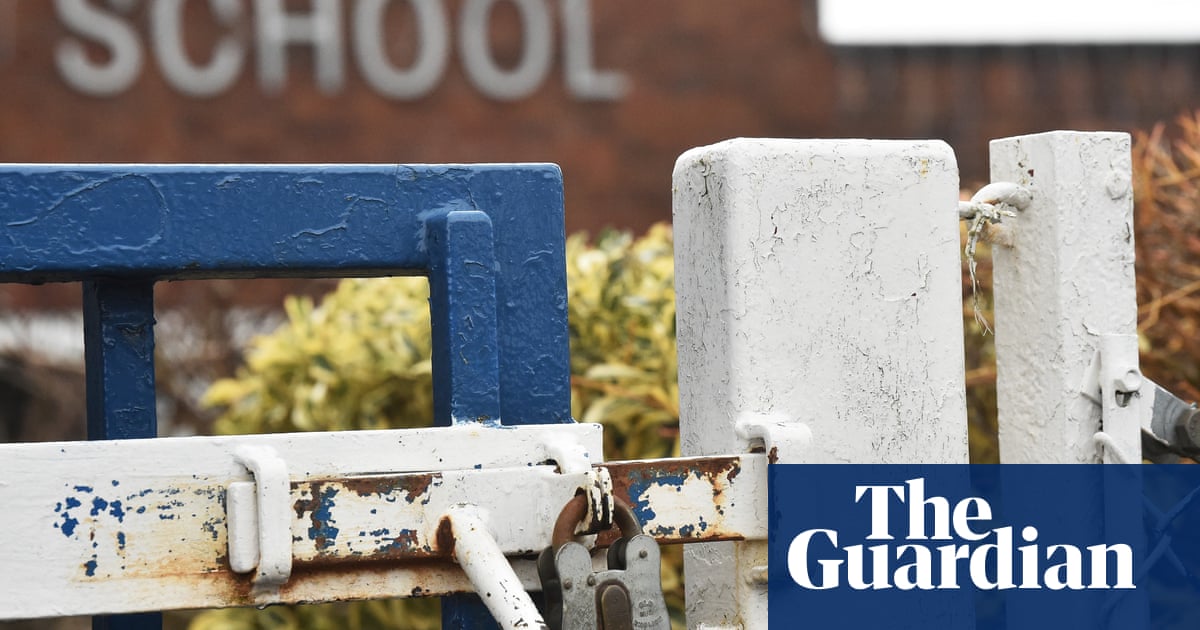
British politics has returned from the summer obsessed with one apparently unlikely subject – concrete. So what is reinforced autoclaved aerated concrete, or Raac, and why is it suddenly so prominent?
What is Raac?
Also known variously as aerobar and aircrete, the “aerated” in the Raac acronym means the concrete is bubbly, rather than filled with material, such as gravel or crushed stone. This makes it cheaper to produce, more lightweight and easier to install – but, crucially, also less durable, with a limited lifespan of about 30 years.
Pioneered in Sweden, Raac was widely used in the UK from the 1950s to the 1980s, and in some cases into the 1990s, often in schools and other public buildings. It was mainly used for roofing, but also for walls and floors.
Why are we suddenly hearing so much about it?
Because at the end of last week, days before the start of the new academic year, an urgent alert went out about the potential risks from Raac-built schools around England, with 156 identified initially as a concern.
As parents tried to discover if their local schools were affected – the Department for Education (DfE) has still not published the list – headteachers scrambled to find out if their schools have any Raac-based buildings, and in some cases seek alternative classrooms, temporary cabins or even entirely new sites. Some students have begun the year learning remotely.
There is also concern about Raac in a series of other public buildings, including courts and prisons.
Why did it all happen so suddenly?
This is perhaps the key question, given concerns had been formally raised about time-expired Raac schools and other at-risk public buildings for more than 20 years, and the DfE had sounded an alert about schools in 2018, when the Raac-built roof of a staff room at a primary school in Kent suddenly collapsed – by chance, on a Saturday.
The DfE said that while it knew about the problem with Raac, the urgency of the task was increased by three sudden failures involving the material at buildings, not all schools, where the risk had been assessed as moderate, the most recent only a week before.
What has happened since?
The situation has been somewhat chaotic, with some schools and headteachers essentially having to adapt as the term started. The DfE urged schools that have not yet completed a questionnaire on possible exposure to Raac to return them, and has dispatched teams of engineers to assess affected sites.
It remains to be seen how many schools are affected, but ministers say it is likely to be well above the 156 so far identified, if still, according to Downing Street, “in the hundreds rather than thousands”.
Some schools with Raac will be minimally affected, if for example only a storage cupboard or single classroom used the material. In other cases, Raac-built areas can be used if the roof is supported with props. But an unknown number of schools are having to find mobile cabins to put in playgrounds, move elsewhere or teach remotely.
Whose fault is it?
It depends who you ask. Raac has been ignored by successive governments, but Conservative administrations since 2010 have drastically reduced the budget for school renovations and rebuilds, making the problem notably more acute.
Rishi Sunak, the prime minister, is personally in the frame for this after it emerged that when he was chancellor, in charge of doling out money to departments, the DfE asked for funding to rebuild between 300 and 400 schools, saying Raac posed “a critical risk to life”. Sunak gave money for just 100, which he then cut to 50.
How has this affected politics?
The chaos has without doubt reflected badly on Sunak and on his education secretary, Gillian Keegan, whose breezy assurances that the great majority of students are not affected has not proved reassuring for everyone.
Any damage to Sunak depends in part on how closely he is tied to earlier funding decisions. Keegan, talked up by some only weeks ago as a possible future Conservative leader, appears more notably harmed, especially after a TV crew recorded her angrily claiming that “everyone else has sat on their arse” while she tried to fix the problem.












